All about ways and methods of counting cards in online blackjack
Whether you sit at a felt table or load up a live-dealer stream, the game rewards players who think in numbers. Mathematics translates the rules of the game into clear decisions you can make in real time. In an online setting like Winshark, where games and limits are abundant, this mindset keeps you disciplined and objective. You will see the same concepts of probabilities, expected value (EV), and variance applied to three pillars: correct play (blackjack strategy), smart betting, and selective game choice.
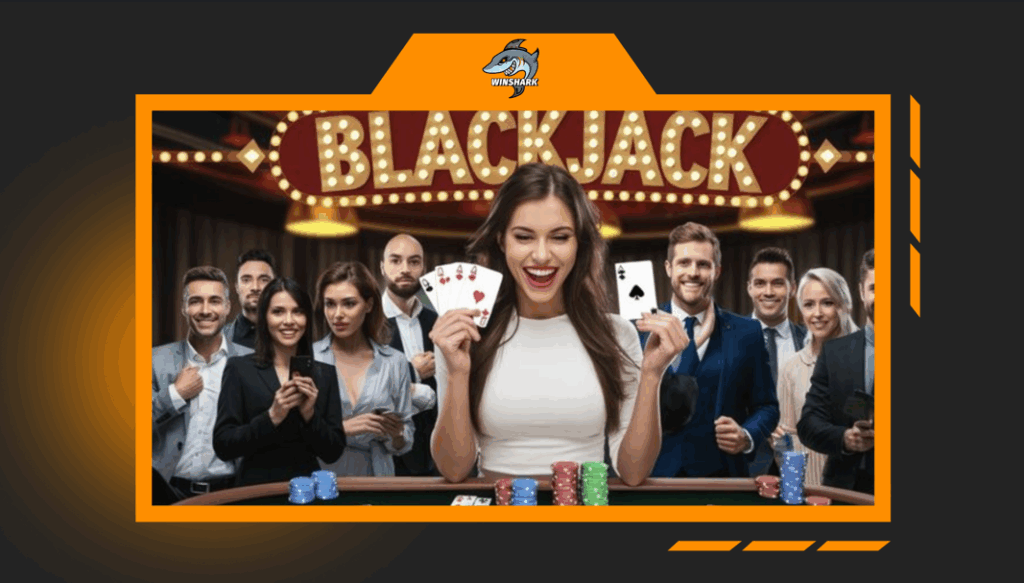
Two clarifications up front:
- This guide focuses on legal, transparent play. Blackjack card counting uses open information (cards that have been dealt) and simple arithmetic, no devices, no collusion.
- In many online formats that use continuous shuffling machines (CSMs) or frequent reshuffles after each round (typical of RNG tables), blackjack card counting is not effective. It can still be useful in live-dealer shoes that penetrate several decks before shuffling.
How to play blackjack: rules, options, payouts, and table etiquette
The objective is to reach a hand total closer to 21 than the dealer without going over. Number cards count at face value; face cards count as 10; aces count as 1 or 11. A “blackjack” is an ace plus a ten-value card on the initial deal and typically pays 3:2 (though some tables pay 6:5, which raises the house edge).
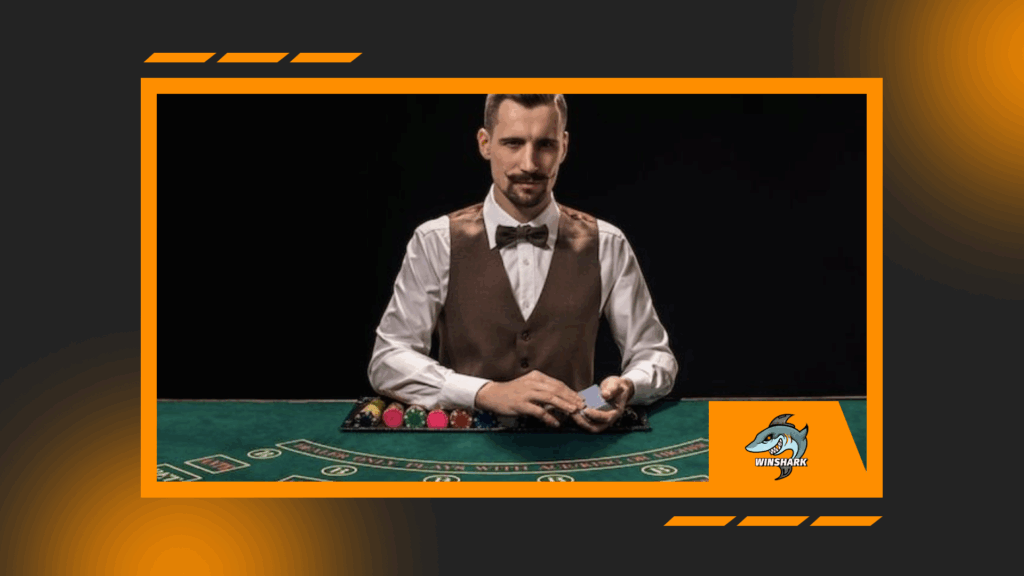
Common actions:
- Hit: take another card;
- Stand: stop taking cards;
- Double down: double your bet, take one (and only one) card;
- Split: separate paired cards into two hands of equal bets;
- Surrender: give up the hand for half your bet back (if offered).
House rules vary by property and online table: number of decks, whether the dealer hits or stands on soft 17 (H17 vs S17), whether doubling after splitting is allowed (DAS), resplitting aces, and surrender availability. Each rule change shifts EV by measurable fractions of a percent; knowing these deltas helps you choose games in the Winshark online lobby that are friendliest to players.
Etiquette is simple: act in turn, announce your decisions clearly, and avoid coaching others unless asked. In live-dealer online streams, type respectfully in chat and allow the dealer to run the game flow.
The core numbers: probabilities, house edge, variance, and EV
Every decision you face has a probability distribution across outcomes, and each outcome has a payoff. Multiply, sum, and you get the expected value (EV). For example, standing on 12 vs dealer 2 may feel cautious, yet the EV is lower than hitting because the dealer completes too many hands.
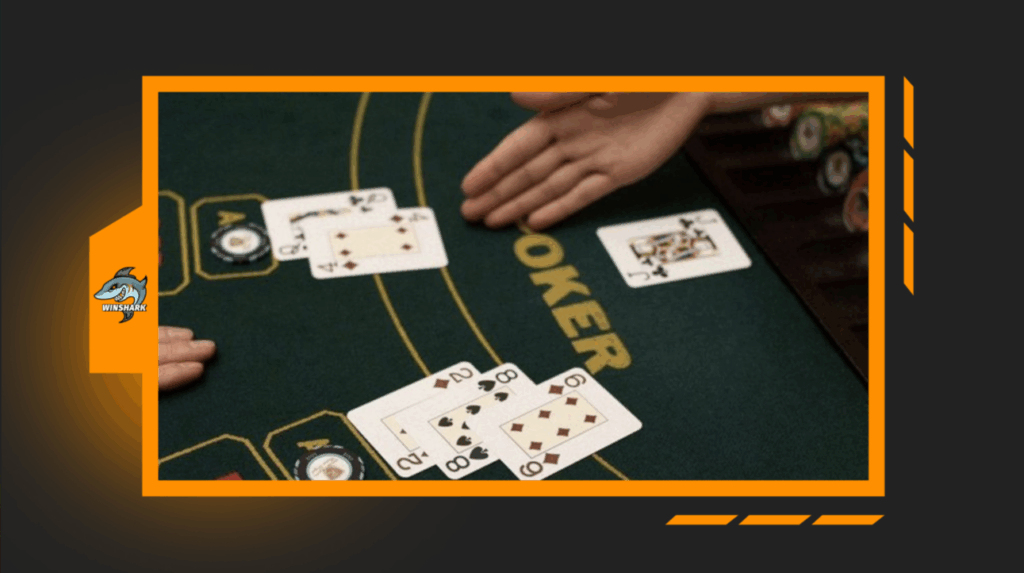
Key ideas:
- House edge is the average long-term percentage the casino earns per unit wager. With optimal play, blackjack’s edge is among the lowest of any table game.
- Variance measures the spread of outcomes around that average. Blackjack’s variance is moderate; the swings can still be dramatic.
- Standard deviation per hand is useful for sizing your bankroll and predicting downswings.
- Combinatorics and conditional probabilities underpin the charts you see in any serious blackjack strategy guide.
When you stick to blackjack strategy and avoid costly rule sets (such as 6:5 payouts or H17 without compensation), you minimize the casino advantage before you consider any advanced technique.
What is basic strategy really and why it matters
Blackjack strategy is the set of mathematically optimal plays for every player total versus every dealer up-card, given a specific ruleset and number of decks. It is computed by simulating all possible sequences or by dynamic programming over state spaces. You don’t have to do the math yourself; you only need to memorize or refer to the correct chart for your table.

Highlights you’ll use constantly:
- Always split A,A and 8,8; never split 5,5 or 10,10.
- Double 10 or 11 against lower dealer cards; double soft hands like A,2 through A,7 against weak up-cards depending on the chart.
- Hit hard 12 vs dealer 2 or 3; stand vs 4–6.
- Surrender 16 vs 9–A (and 15 vs 10) if your ruleset allows it.
Each rule tweak (H17/S17, DAS, number of decks) adjusts several lines on the chart. In the Winshark online environment, review the table rules listed in the game information panel and follow the matching blackjack strategy chart.
Card counting in context: where it works, where it doesn’t
Counting works because tens and aces favor the player: they create more blackjacks (which pay a premium), boost double-down results, and cause dealer busts. Low cards favor the dealer: they turn stiff hands into safe hits. A counting system tallies seen cards to estimate the composition of the remaining shoe, then you vary bets and (sometimes) a few plays accordingly.
Where it works:
- Multi-deck shoes with meaningful penetration (e.g., 4.5/6 or 5/8 decks dealt before shuffling).
- Live-dealer online tables that deal several rounds between shuffles.
- Rules that are otherwise fair (S17 or late surrender help).
Where it does not:
- RNG online games that reshuffle every round.
- Continuous shuffle machines.
- Very shallow penetration or strict table limits that block any bet spread.
If your aim is blackjack card counting, always confirm the game format first.
Plus–Minus system step by step
The Plus–Minus is the most popular starting point because it is balanced and easy to execute.

- Tags:
- 2–6: +1
- 7–9: 0
- T–A: −1
- Running count (RC): Add the tag of each card as it is exposed.
- True count (TC): RC divided by decks (or half-decks) remaining.
- Betting: Increase bets as TC rises; decrease when TC is neutral or negative.
- Deviations: A short list of index plays like standing on 16 vs 10 when TC ≥ 0 shifts your decisions when the shoe is rich in tens.
Mini-example: Suppose the RC is +8 with roughly 4 decks left; TC ≈ +2. That is a small edge; you might raise your unit bet by a step. At TC +4 or +5, your advantage can cross into positive territory, justifying your maximum bet (subject to table min/max and bankroll rules).
Because Plus–Minus is balanced, the RC tends to drift toward zero by the end of the shoe. That balance makes it straightforward to convert to TC and compare to index numbers published for your ruleset. Many beginners learn how to count cards using Plus–Minus before exploring more granular systems.
Halves system step by step
The Halves system weights certain ranks by half-points to track the deck more precisely.
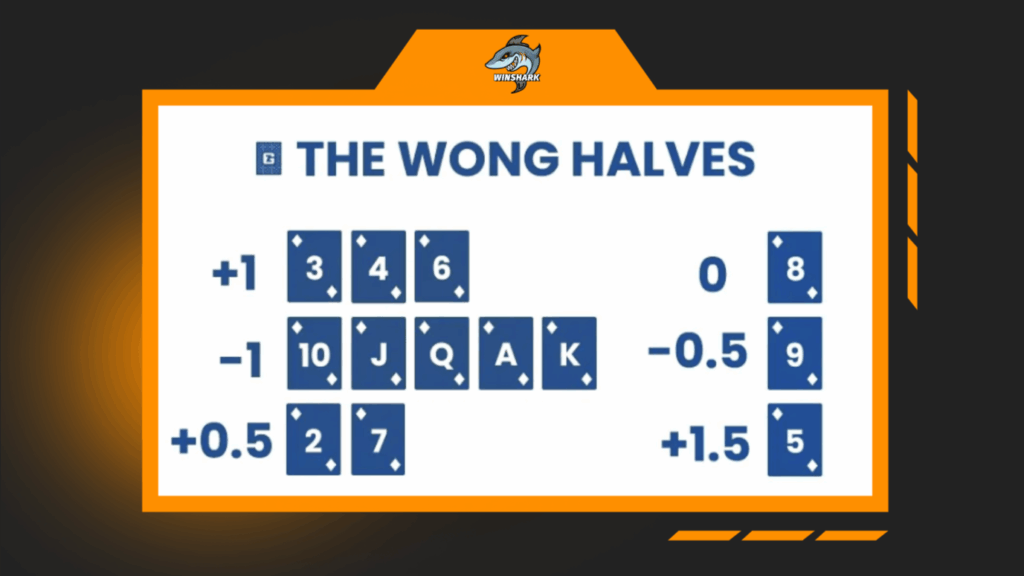
Tags:
- 2: +0.5
- 3: +1
- 4: +1
- 5: +1.5
- 6: +1
- 7: +0.5
- 8: 0
- 9: −0.5
- T–A: −1
Operationally, you still keep an RC and convert to a TC by the remaining decks. The practical challenge is arithmetic speed: adding 0.5s cleanly while the table moves quickly. The reward is a little more information density especially around 5s and 9s that translates into stronger betting correlation and, with practice, a slightly higher win rate than simpler counts. For many players, Halves is the ceiling of mental complexity that still feels comfortable in live-dealer online sessions.
KO “Knock-Out” method step by step
KO is an unbalanced system designed to remove the need for TC conversion.
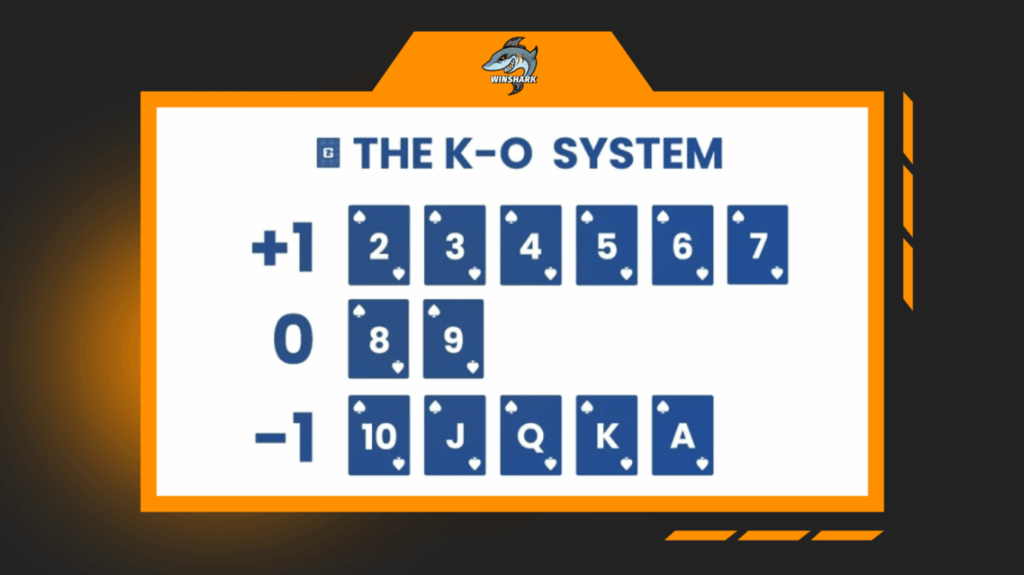
Tags:
- 2–7: +1
- 8–9: 0
- T–A: −1
Because there are more low cards than high cards in a full shoe, KO’s RC will not end at zero. Instead, you begin at a pivot (the “initial running count,” or IRC) tailored to the number of decks. As the RC crosses the system’s key threshold, you raise your bet; when it falls, you scale down. Many players prefer KO in busy online environments because it reduces mental overhead with only a small performance trade-off versus Plus–Minus.
From running count to true count: betting ramps and index plays
Counting is not just keeping numbers, it is turning numbers into dollars with discipline.
TC conversion
Plus–Minus/Halves: TC = RC ÷ decks (or half-decks) remaining. Eyeballing “decks left” improves with repetition; use the discard tray’s markers in live-dealer online shoes.
Betting ramp
- Define a unit bet (e.g., 1% of your max session bankroll).
- Raise 1× unit at TC +1 or +2, 2–4× at TC +3, 6–10× near TC +5 depending on table tolerance.
- Keep the spread realistic for the table and your cover. Winshark’s casino tables often give you a generous range of limits in the online lobby; use them to find a spread you can actually execute.
Deviations
A compact package of index numbers (e.g., the “Illustrious 18” and “Fab 4”) tell you exactly when to break from blackjack strategy. Example lines:
- Insurance at TC ≥ +3 (ten-rich shoes).
- Stand 16 vs 10 at TC ≥ 0; otherwise hit or surrender.
- Double 10 vs 10 at TC ≥ +4 in some rule sets.
Combine these ingredients and card counting in blackjack becomes an actionable plan rather than an abstract skill.
How casinos detect counters and manage risk
Professional pit teams and surveillance rooms aren’t guessing they run patterns. Understanding their view helps you stay welcome.

What gets flagged:
- Bet spread patterns: jumping from table minimum to table maximum only when the shoe is hot is the loudest signal. Smooth, plausible progressions draw less attention.
- Play deviations that track the count: standing 16 vs 10 only at particular moments is a classic tell.
- Seat hopping and Wonging: entering mid-shoe at positive counts (or leaving at negative counts) is often restricted by “no mid-shoe entry” rules.
- Session length and timing: short, hit-and-run sessions at the same positive counts look suspicious.
- Team play: spotter–big player signals, even if subtle, are a known pattern.
What managers do:
- Adjust shuffle points to reduce penetration.
- Offer more shoes with H17 or 6:5 payouts.
- Limit bet spreads or flat-bet you.
- Politely invite you to try other games “We love having you at the casino, but blackjack may not be the right fit today.”
For a recreational player at Winshark’s online live-dealer tables, the practical takeaway is simple: play within posted rules, avoid exaggerated spreads, and rotate tables. At RNG online games, accept that counting gives no edge and stick to blackjack strategy and good money management.
Online blackjack specifics: live-dealer vs RNG, game selection at Winshark
In an online lobby you’ll see two main categories:
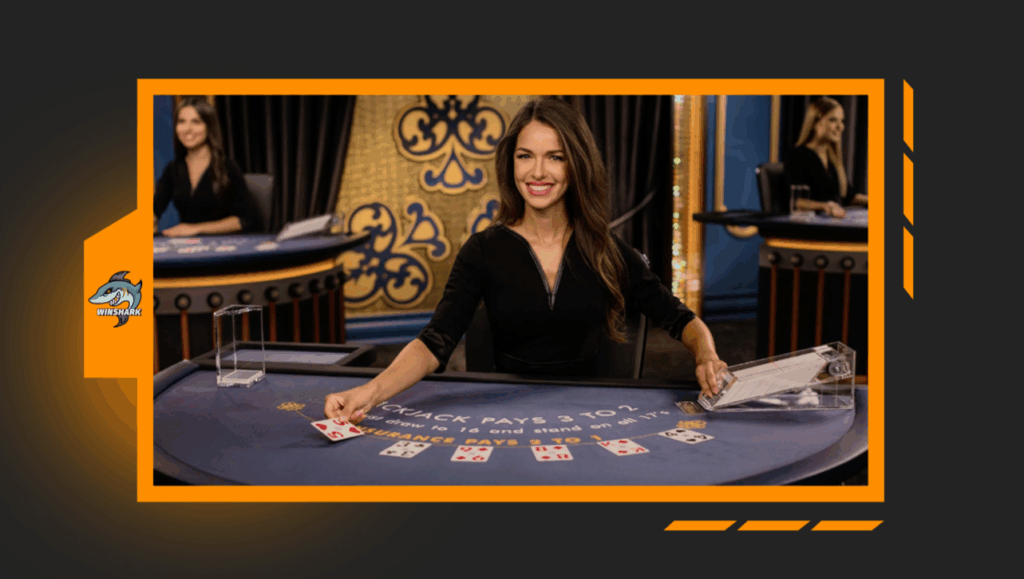
- RNG tables: every deal is produced by a certified random generator and the shoe effectively reshuffles each round. Counting does not apply. Your edge comes entirely from rule quality and disciplined blackjack strategy. Choose S17, 3:2 payouts, DAS, and surrender when available.
- Live-dealer tables: a human dealer runs real shoes on camera. Counting can be meaningful if the dealer deals deeply before shuffling. Look for tables with published deck counts and visible discard trays. Check limits to ensure your betting ramp is feasible. At Winshark’s online interface, the game info tiles help you compare rules at a glance so you can pick a casino table that matches your plan.
Practical casino selection checklist:
- Prefer 3:2 payout.
- Prefer S17 if you can find it; if not, compensate by playing tighter with doubles and be mindful of EV.
- Late surrender and DAS are positives.
- Fewer decks + deeper penetration improves counting EV.
- Confirm table limits let you spread without drawing “heat” in a live environment.
Bankroll, risk of ruin, and session management
Even perfect play faces volatility. Bankroll is the cushion between a normal downswing and tapping out.
- Sizing: For flat-bet basic play, 50–100 average bets is a minimal comfort zone. For counting with spreads, 100–300 units helps absorb variance.
- Risk of ruin (RoR): With a positive edge (from counting) and a given variance, RoR drops as bankroll grows. Many skilled players aim for <5% RoR across a trip.
- Kelly fraction: Full-Kelly bet sizes maximize growth but create wild swings; many adopt Half-Kelly or Quarter-Kelly to trade a small amount of EV for survivability.
- Stop-loss / stop-win: Predetermine session ranges to control emotional decisions. There’s no magic in “quit when up X,” but rules prevent tilt.
On the Winshark casino platform, use account tools to set deposit caps, cooling-off periods, and session reminders. Those features are designed for online responsibility and can save your plan during a rough patch.
Frequent mistakes players make
- Ignoring the rules card. A 6:5 payout silently adds a big chunk to the casino edge. Fix: filter for 3:2 in the online lobby.
- Guessing at the chart. “Close enough” is expensive. Fix: learn the exact blackjack strategy for your ruleset.
- Inconsistent bet sizing. Drifting between random amounts destroys your data-driven approach. Fix: pre-define unit sizes and your ramp.
- Over-spreading at the wrong table. A 1–12 spread at a crowded low-limit game is both conspicuous and constrained by max bet. Fix: pick casino limits that fit your plan.
- Forcing counting in RNG games. It simply doesn’t work. Fix: use blackjack strategy, table selection, and bankroll control for RNG; reserve counting for live-dealer shoes.
- Chasing losses. Emotional doubling after a bad run is not math, it’s tilt. Fix: time-boxed sessions and written rules.
- Poor record-keeping. Without logs you can’t evaluate your edge. Fix: track hours, hands, average bet, and net results; in online accounts you can often export session summaries.
- Neglecting cover entirely or overdoing it. Extreme camouflage crushes EV; zero cover draws attention. Fix: small, natural-looking variations in behavior and bet development.
Final thoughts
Blackjack blends clean rules with rich mathematics. When you align three elements table selection, blackjack strategy, and disciplined bet sizing you shrink the casino advantage to its minimum and, in the right live-dealer settings, tilt the odds in your favor with counting. Whether you’re practicing at home, enjoying RNG tables for recreation, or pursuing an edge at a live-dealer shoe in the Winshark online lobby, let the numbers lead the way.

 Blackjack
Blackjack Popular
Popular How To Play
How To Play


Comments
Be the first to leave a comment!